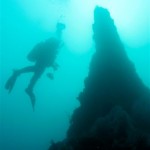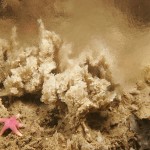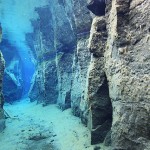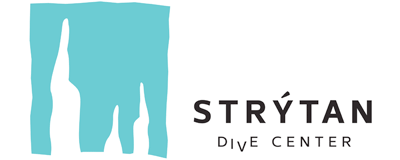Strýtan
Some sicentist belive that beginning of life on Earth began in the sea on place similar to Strytan. Strytan the giant submarine smectite cones rise from the 70 meters deep seafloor at Eyjafjörður to 15 meters under the surface. That makes Strýtan almost 55 meters high and the only cone we know of in the world you can scuba dive. Other similar cones known are at the depth of 2500-6000 meters. It was in 1997, Erlendur Bogason and his friend Árni Halldósson captain on the whale watching boat Níels Jónsson discoverd Strytan and Erlendur Bogason dived the frist time to Strytan. The top of Strytan is 15 meter under the surface and we estimate it is around 100 litres of 75°C hot water per second coming out of the cone. Strýtan started developing at the end of last ice age 10.000 years ago and are made from magnesium-silicate from the sea. When diving on Strytan you also have to think about this unique ecosystem,animals, algae and microorganism. Strytan was protected in 2001 and was the first underwater protected area in Iceland. Divers can make damages easy on Strytan when diving so dive carefully and have fun.
More informatio, images and prices – Brochure (IS)
Arnarnesstrýtur
 What we call Arnarnesstrytur are a cluster of small cones on area that is 400 meter wide and 1000 meters long. Arnarnesstrytur were protected in 2007 and became the second underwater protected area in Iceland. On this protected area are found lot of small cons but some of them rise up to 12 meters from the seafloor. The shallowest cones are found at the depth of 15 meters and the deepest are at the depth of 55 meters. Scientists tell us that the age of the 79.6°c hot water coming (oozing , gushing)out of the cones is 1100 years old. We will take some hot water into thermo when we dive from the cone to take to the surface to make some hot cocoa in the boat after the dive. In june we dive with Guillemot birds egg and cook them in hot water from the cone. We feed the cod and the wolffish but we also have to think about this uniqe ecosystem with animals, algae and microorganism that can me damages by divers. Dive carefully and have fun.
What we call Arnarnesstrytur are a cluster of small cones on area that is 400 meter wide and 1000 meters long. Arnarnesstrytur were protected in 2007 and became the second underwater protected area in Iceland. On this protected area are found lot of small cons but some of them rise up to 12 meters from the seafloor. The shallowest cones are found at the depth of 15 meters and the deepest are at the depth of 55 meters. Scientists tell us that the age of the 79.6°c hot water coming (oozing , gushing)out of the cones is 1100 years old. We will take some hot water into thermo when we dive from the cone to take to the surface to make some hot cocoa in the boat after the dive. In june we dive with Guillemot birds egg and cook them in hot water from the cone. We feed the cod and the wolffish but we also have to think about this uniqe ecosystem with animals, algae and microorganism that can me damages by divers. Dive carefully and have fun.
More informatio, images and prices
The Northen Water Circle
The first diver we know of dived the crack Nesgjá and the Lake in 2009. Since then only few divers have dived in this clear water with visibility over 100 meters. The Lake is also known for bird life. After the big earthquake in 1976 the water in the river Litla Á changed from being cold to being up to 23°c warm. You can see and feel the hot water coming from the ground like small Geysir. The river is also known for big touts. Dettifoss the 100m wide waterfall that have a drop of 44m to the canyon Jökulsárgljúfur. Dettifoss is the largest waterfall in Europe in terms of volume discharge. Námaskarð are know for mud Geysir and at Leirhnjúkar area were nine valcanos from 1975-1984. Lake Mývatn and its surrondings wetlands have an expeptionally rich fauna of waterbirds especially ducks. Close to Lake Mývatn we can take bath in the geothermal spa or in one of the warm cracks. On the way back to Akureyri we will stop at the water fall Godafoss. In the end of the tour back in Akureyri we invide you for Icelandic meal. We also offer a shorter dive and snorkel tour to Nesgjá and Litla Á from Akureyri.
